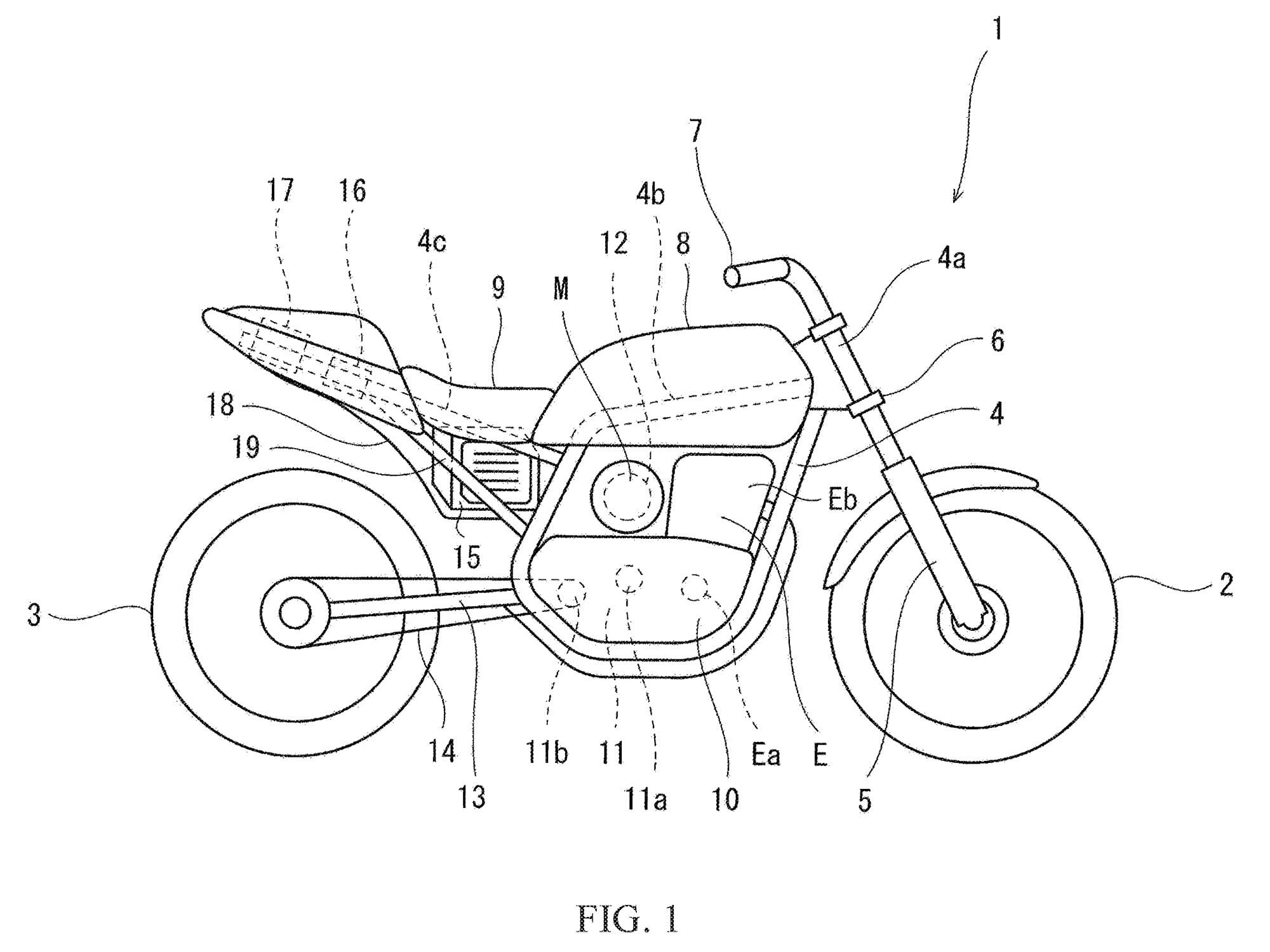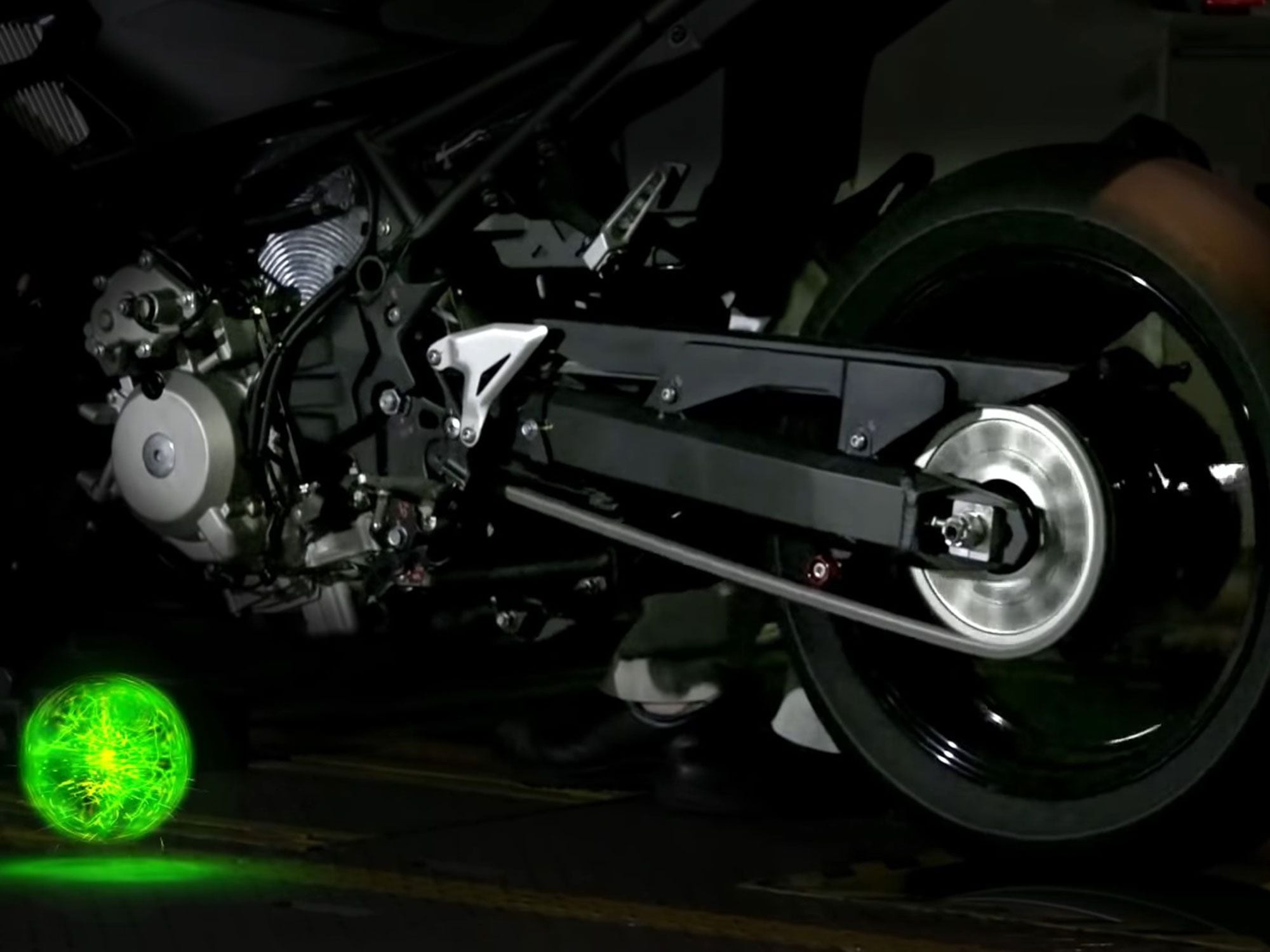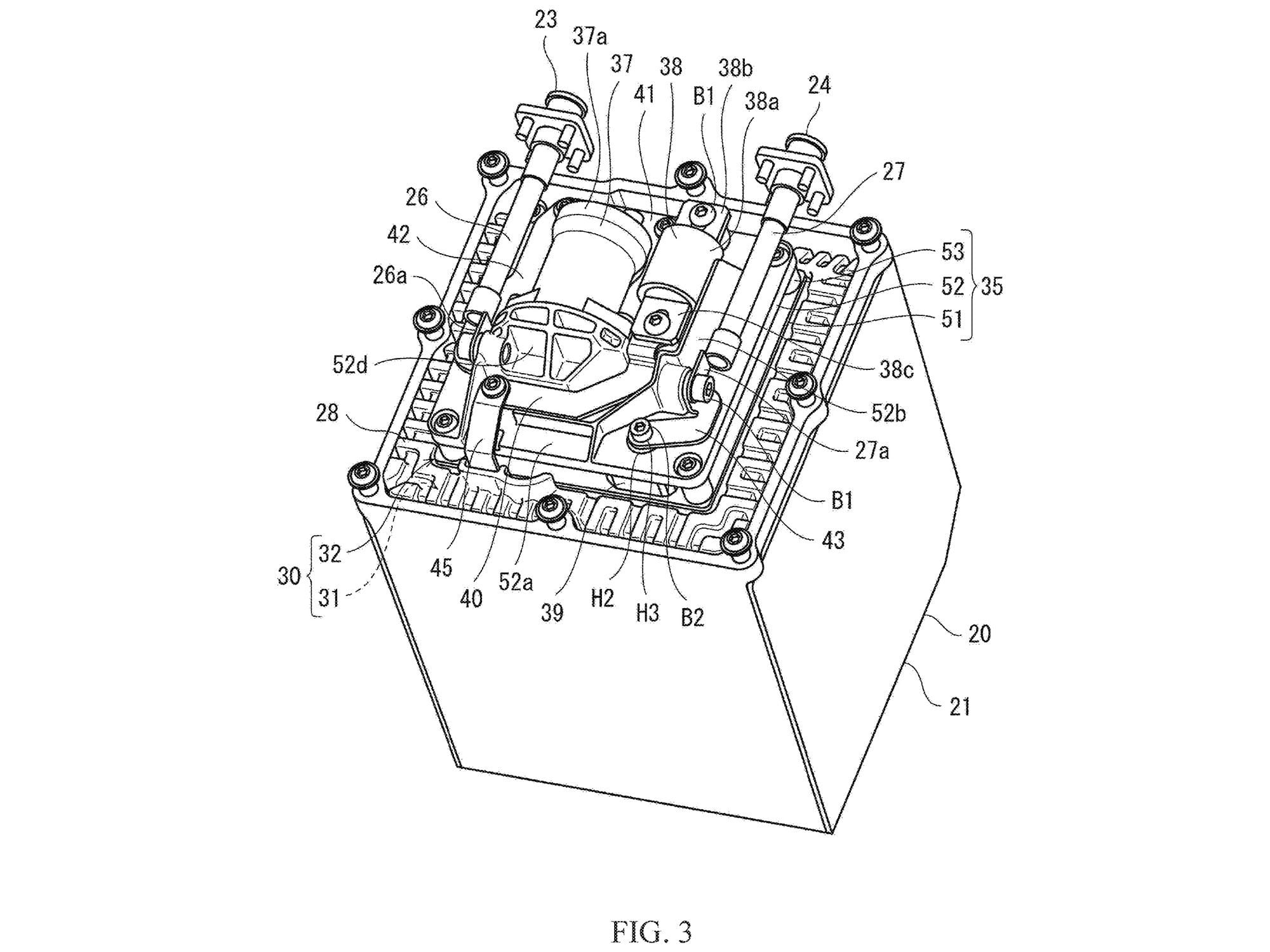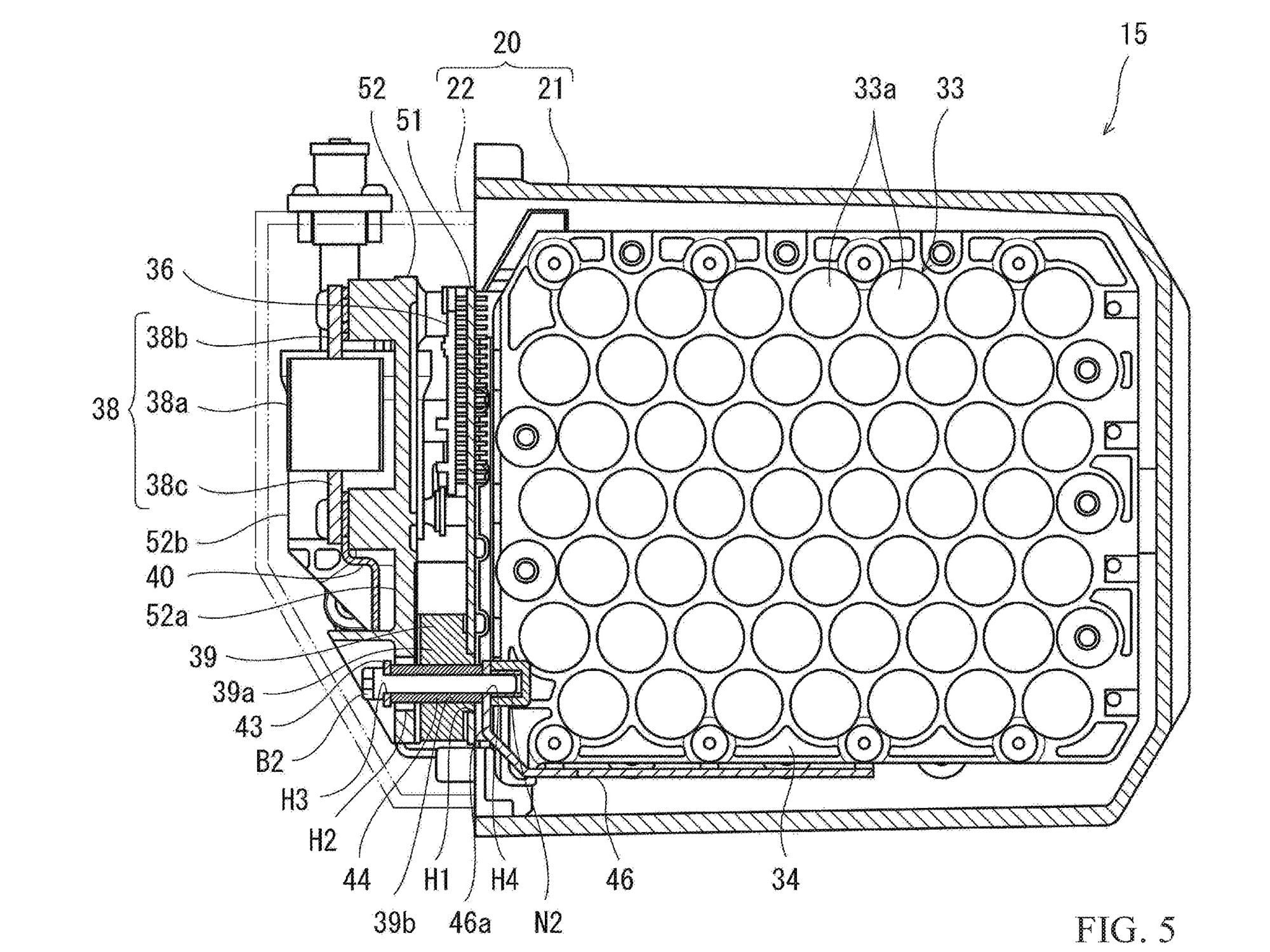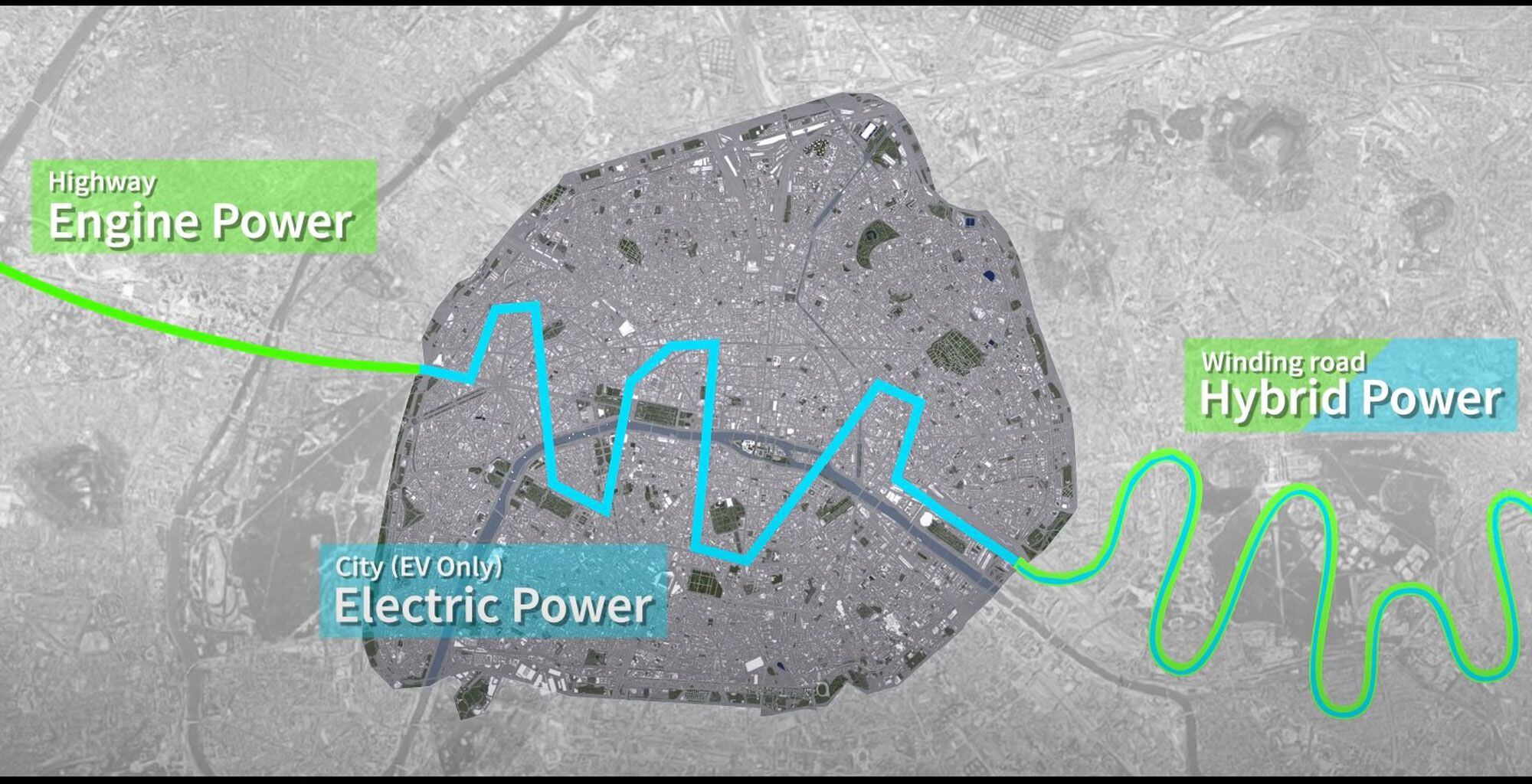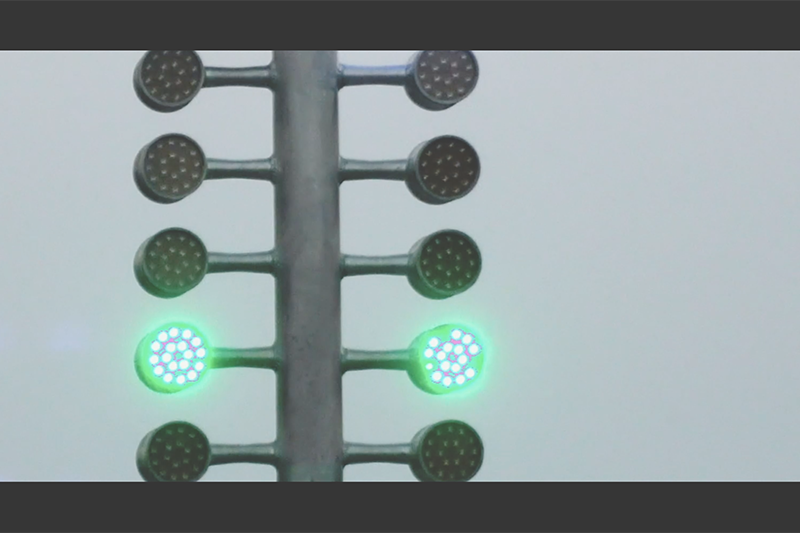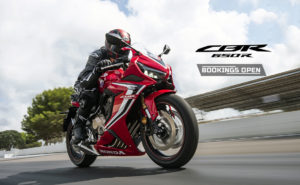New patents show Kawasaki making strides on its hybrid motorcycle project. (Japanese Patent Office/)Hybrids are fast becoming the norm in the automotive industry, as manufacturers look to combine the efficiency of electric power with the convenience and range of combustion engines. Despite a few false starts, however, the same idea has yet to take hold in the two-wheel world.
Yes, Piaggio tried the hybrid route with the MP3 Hybrid and Honda has a hybrid version of the PCX scooter for sale in some markets, but neither has made much impact. However, Kawasaki appears to be increasingly committed to the idea of a hybrid, developing a sport-oriented machine that’s been the subject of several patents and even a teaser video in recent months.
These video grabs show hints of the hybrid’s underseat battery. (Kawasaki/)Last October we revealed details of that hybrid project. The patents and video glimpses seen so far suggest it’s based on the Ninja 400/Z400 platform with the addition of a hefty electric motor above the transmission. The system allows the bike to be ridden as a conventional combustion-engined machine, using spare power to recharge its on-board battery pack, and then switched to an all-electric, zero-emissions mode for short distances and low-speed use, for instance in cities.
But most intriguingly, the two powertrains can also be used together, with the electric motor filling out the torque curve of the combustion engine and providing additional acceleration when needed. Kawasaki even went as far as patenting the design for a “boost” button built into the throttle twist grip to allow instant access to the extra performance.
The latest patents give a better idea of that battery pack’s cube-like form. (Japanese Patent Office/)Now a new patent has added some extra substance to the firm’s plans, revealing the design and size of the battery pack it will carry. Batteries are, of course, the real sticking point for electric bikes; while electric motors capable of plenty of performance are already available—and are lighter and more compact than a combustion engine—getting any worthwhile range or speed from them requires that the batteries be big and heavy. This is where hybrids come to the fore, as they can leverage the performance of an electric motor without needing to worry about where the next charge is coming from. Hence, a smaller, lighter battery, perhaps only good for half an hour’s riding on its own, can be used. The gas engine is always there as a safety net if you run short of charge or need more speed.
RELATED: Kawasaki Developing Hybrid Motorcycle Technology
The latest Kawasaki patent shows the hybrid’s battery in some detail. It’s designed to fit under the seat, and snatched images from the teaser video released by the firm late last year show a large bulge in the undertray above the rear tire to match the battery’s position. In terms of dimensions, it’s a cube of around 8.5 inches on each side, filled with tubular battery cells. They all sit in a resin case, with a removable end panel that covers a relay and built-in fuse as well as the main positive and negative connectors. This high-voltage main battery is connected to a DC-DC converter that reduces the voltage to 12V to charge a smaller, auxiliary battery in the tail of the seat unit. This smaller battery would run the bike’s normal electrical systems—its lights, ECU, and the engine’s ignition system, for instance—while the high-voltage main battery is running the electric motor.
The main battery also charges a smaller aux unit that would power the bike’s electronics. (Japanese Patent Office/)While hybrid bikes have largely been ignored in the past, future changes to regulations could make them more attractive, particularly since the main concerns over pure electric motorcycles—the weight of their batteries, range limitations, and slow recharging times—are shared by both manufacturers and motorcyclists and don’t appear to be getting closer to a resolution. Future emissions rules all over the world, including the increasing adoption of zero-emissions zones in city centers, could well bring hybrids into focus. Although packaging two separate powertrains into the already-tight confines of a motorcycle is an engineering challenge, there are tangible benefits over all-electric bikes in terms of a hybrid’s long-distance ability.
Kawasaki’s dual powertrain system would allow the bike to be ridden either as combustion-engined or as all-electric. (Kawasaki/)Kawasaki isn’t alone in considering the idea. Honda took a very close look at making the current-generation Gold Wing a hybrid, going as far as developing a 1,200cc flat-four engine—essentially the existing 1,800cc six with the front two cylinders removed—and adding an electric motor/generator to the front of the crankshaft. That motor eventually appeared in the firm’s NeoWing concept bike and may yet find a home in a future version of the Wing. Yamaha has also put a lot of R&D into hybrids, though its efforts were in the early 21st century with bikes like the Gen-RYU concept of 2005 and the HV-X hybrid, a near-production machine that was shown in 2009 but then disappeared without trace.
Kawasaki’s hybrid is expected to make an official appearance sometime this year, though it’s unclear whether it will be revealed purely as an engineering project, like the electric Ninja the firm showed in 2019, or as a genuine production prospect.


